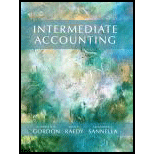
Scene 1:
The concept of the deferred tax liability (which is reported under both U.S. GAAP and IFRS) has been at the root of disagreement among financial statement users for quite some time While some do believe that it is truly a liability, others do not The following is an excerpt from “The Valuation of
Financial statement users often disagree as to the most appropriate method for valuing a firm that has
Others argue that many deferred tax liabilities (e g , deferred taxes resulting from depreciation and temporary amortization differences) are never settled, hence, net deferred tax liabilities should be added to (and net deferred tax assets should be subtracted from) the firm's book value of shareholders' equity Consistent with this approach Statement of Standard Accounting Practice (SSAP) No 15 issued by the Accounting Standards Committee in the United Kingdom (ASC 1985) requires companies to adopt a partial inter period tax allocation method, that is, to recognize only those deferred taxes that are expected to materialize in the foreseeable future (3-5 years) This partial recognition effectively regards long-term temporary differences as part of equity.
Read paragraphs 75 through 79 in the BCs of FASB’s Statement of Financial Accounting Standards No 109, “Income Taxes” Does the FASB believe that the deferred tax liability is really a liability? How does it support this position?
Scene 2:
Do you agree with the FASB’s position and its supporting arguments? Please explain and support your position
Do you agree with the FASB's position and its supporting arguments'? Please explain and support your position
Scene 3: IFRS
Consistent with the discussion above, some financial statement users believe that the deferred tax liability account should be discounted, or that a partial interperiod tax allocation method should be allowed Read International Accounting Standard 12, “Income Taxes” paragraphs 16, 53 and 54 Also, read paragraphs 198, 199, 203, 204 and 205 in the BCs of FASB's Statement of Financial Accounting Standards No 109, “Income Taxes.”
- a. Do the boards allow deferred tax liabilities to be discounted?
- b. Do the boards allow the use of a partial interperiod allocation method?
- c. How do the boards support their position on discounting?
- d. How does the FASB support its position related to interperiod tax allocation?
Want to see the full answer?
Check out a sample textbook solution
Chapter 17 Solutions
Intermediate Accounting
- Can you explain this general accounting question using accurate calculation methods?arrow_forwardPlease provide the correct answer to this general accounting problem using accurate calculations.arrow_forwardInnovations Inc. had a $38,000 beginning inventory and a $45,000 ending inventory. Net sales were $215,000; purchases were $110,000; purchase returns and allowances were $5,000; and freight-in was $9,000. Cost of goods sold for the period is $107,000. What is Innovations Inc.'s gross profit percentage?arrow_forward
- What is the total amount of product costs incurred to make 11,400 unitsarrow_forwardProvide correct answer this general accounting questionarrow_forwardLuma Co. had the following transactions in 2020: Sales of $5,200 on account . Collected $2,200 for services to be performed in 2021 . Paid $1,500 cash in salaries Bought event tickets for $300 in December for 2021 What is Luma's 2020 net income using cash- basis accounting?arrow_forward
- Principles of Accounting Volume 1AccountingISBN:9781947172685Author:OpenStaxPublisher:OpenStax College



